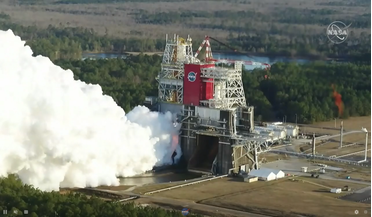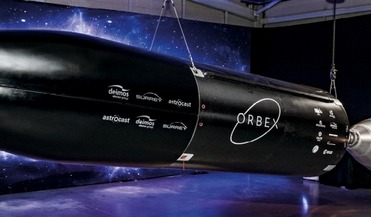 18 January 2021
NASA's SLS engine test ends early
18 January 2021
NASA's SLS engine test ends early
...it will take to send the rocket to space following launch. The team successfully completed the countdown and ignited the...pounds of liquid oxygen and liquid hydrogen – mirroring the launch countdown procedure – and igniting the engines. "Saturday’s ...
 April 2019
Building the UK’s first spaceport
April 2019
Building the UK’s first spaceport
...believes the Earth observation and communications low orbit constellation market will require close to 1000 satellites to be launched, and potentially as many as 4000 over the next decade. Constellation satellites tend to be small (only a few hundred...
 October 2019
Skyrora – building on British space heritage
October 2019
Skyrora – building on British space heritage
... hydrogen peroxide is that the launcher can be fuelled and ready to go at any time because it can be kept on the launch pad at ambient temperatures, without risking evaporating fuel, frozen valves or other low temperature damage. According to Levykin...
 April 2020
European spaceports compete for recognition and business
April 2020
European spaceports compete for recognition and business
... from the state, it would be hard to find an investor ready to take such a risk. The main risk is a launch accident resulting in a launch hiatus. For example, the Amos-6 accident resulted in an estimated $120 million loss for SpaceX, including...
 May 2020
Iran - emerging space state or threat to world peace?
May 2020
Iran - emerging space state or threat to world peace?
... ballistic missiles and space launchers is still shrouded in secrecy. The development of its own space launch vehicle, which could be used to launch its own satellites, began after the establishment of the Iranian Space Agency in 2004. On 25 February...
 30 June 2016
Orbital ATK and NASA Successfully Complete Second Qualification Test
30 June 2016
Orbital ATK and NASA Successfully Complete Second Qualification Test
The QM-2 test was conducted in order to test the performance at the lower operational temperature limit (40 °F / 4.44 °C). The booster was kept in a cold environment for over a month in an attempt to uniformly cool the casing and propellant. All ...